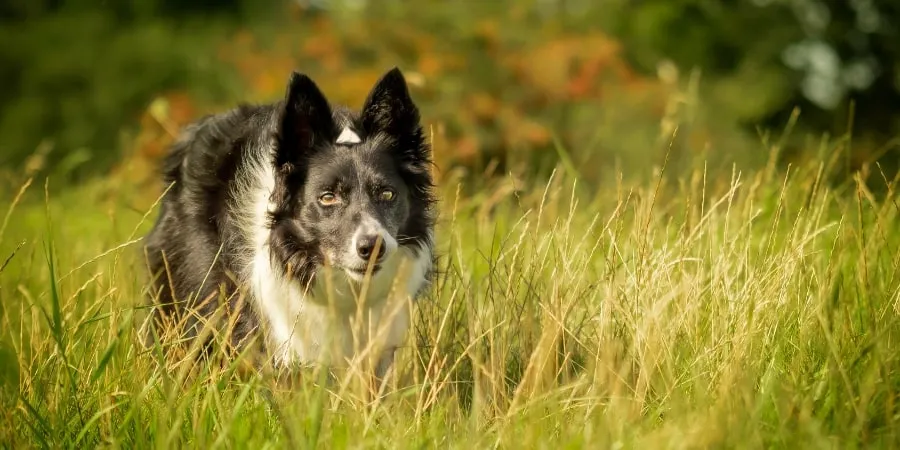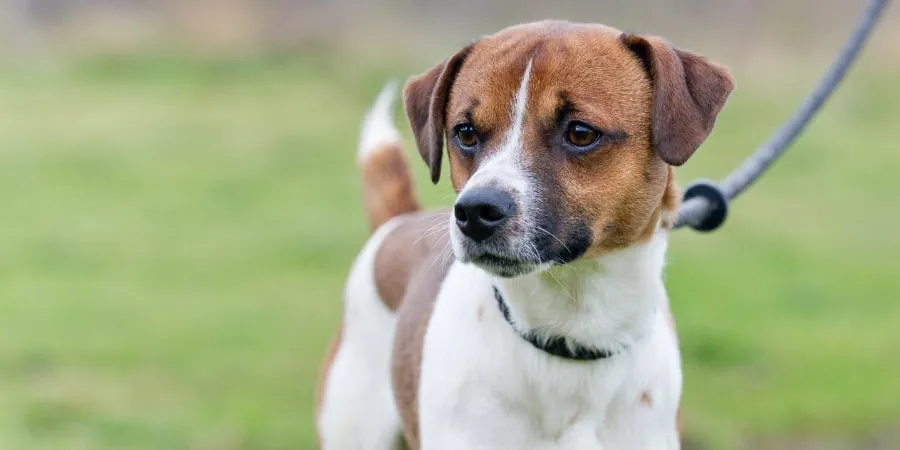The instinct to chase is deeply embedded in many dogs, a natural urge known as prey drive. While it’s a normal behavior, an uncontrolled prey drive, especially when directed at birds, can lead to stressful situations, potential injuries for your dog, or harm to wildlife. If you find your canine companion constantly fixated on flying feathers during walks, understanding and managing this instinct is crucial for their safety and peace of mind. This guide will provide actionable strategies to help your dog learn to coexist peacefully with birds.
Understanding Your Dog’s Prey Drive
Prey drive is essentially the hunting instinct in animals, a sequence of behaviors designed to catch food. You often observe elements of this drive in everyday dog play—the intense focus on a thrown ball, the vigorous tugging during a game, or the satisfaction of “destroying” a stuffed toy. By channeling these innate behaviors into appropriate play, we can offer our dogs a safe and acceptable outlet for their natural urges. Some dogs exhibit a much stronger prey drive than others, meaning they are inherently more inclined to pursue and catch moving objects or animals like squirrels, mice, or, in many cases, birds. Recognizing the strength of your dog’s prey drive is the first step in effective management.
Common examples of breeds with a naturally high prey drive include Greyhounds, Lurchers, Collies, and various Terriers, all selectively bred for tasks that required strong chasing or hunting instincts. However, it’s vital to remember that a strong prey drive isn’t exclusive to these breeds; any dog, regardless of its heritage, can possess this inclination. Therefore, being able to identify the signs of a developing chase sequence—such as intense staring, stiffening of the body, or immediate pursuit—is essential for all dog owners. Early recognition allows for timely intervention and training to help your dog manage their instinct to chase, particularly when it comes to birds.
 A collage of various dog breeds known for their high prey drive, including a Greyhound, a Border Collie, and a Terrier.
A collage of various dog breeds known for their high prey drive, including a Greyhound, a Border Collie, and a Terrier.
Effective Training Strategies to Prevent Bird Chasing
The most effective way to curb your dog’s habit of chasing birds and other animals is through consistent, positive reinforcement training. If your dog exhibits a high prey drive, taking proactive steps is crucial to prevent them from accidentally harming themselves or local wildlife. Here are several key strategies you can implement:
Teach the “Leave It” Command
The “leave it” command is an invaluable tool for preventing unwanted chasing. While often used to stop a dog from picking up something undesirable, it can also effectively deter them from running after birds. The key is timing: deliver the “leave it” command as soon as your dog spots a bird or shows any indication of wanting to chase. Immediately reward your dog with a high-value treat or praise for disengaging from the bird and shifting their attention back to you. Consistent practice in various environments will solidify this command.
Mastering Recall
A reliable recall is paramount for your dog’s safety, especially in off-leash areas where birds are present. Training your dog to consistently come back to you when called ensures that even if they begin a chase, you can quickly bring them back under control. Practice recall frequently, starting in a quiet environment and gradually introducing distractions. When your dog returns, celebrate their success with their favorite treat, a cherished toy, or enthusiastic praise, making the act of returning more rewarding than the chase itself. This positive association reinforces the desired behavior over the instinctive urge.
Consistent and Reward-Based Training
Training is not a one-time event; it’s a lifelong commitment. Continue with positive, reward-based training throughout your dog’s life, reinforcing commands and good behavior. Your dog needs to understand that obeying your commands consistently leads to more desirable outcomes than the fleeting thrill of chasing a bird. Always use treats, toys, or verbal praise to reward calm behavior around birds and successful disengagement. Avoid punishment, as this can create negative associations and potentially increase anxiety around the very things you want them to ignore.
Distraction Techniques
Staying alert during walks is crucial. Anticipate situations where your dog might encounter birds. If you spot birds before your dog does, gently distract your pooch. Use their favorite squeaky toy, a quick game of “find the treat” on the ground, or simply change direction to avoid the temptation. The goal is to redirect their focus to you before their prey drive fully engages. This proactive approach can prevent the chase from even starting, gradually teaching your dog that ignoring birds is a more rewarding option than pursuing them.
Secure Your Garden
Your garden can be a haven for both your dog and local birdlife, but only if it’s secure. Ensure all fences and gates are sturdy and high enough to prevent your dog from escaping and chasing birds that land or pass through. Regularly inspect for any weak spots or potential escape routes. Creating a pet-friendly garden might also include designating specific play areas for your dog away from bird feeders or bird baths, helping to minimize direct interactions and reduce the temptation to chase.
Leash Control
When you are in areas known for bird populations or if your dog’s recall is still developing, keeping them on a leash is the safest approach. A sturdy leash provides immediate control, allowing you to manage your dog’s reactions to birds effectively. If your dog lunges or pulls towards birds, calmly redirect them and reward calm walking. For dogs with an extremely strong prey drive, a longer training leash can offer more freedom for exploration while still maintaining control, slowly transitioning to off-leash privileges as their training progresses.
 A dog on a short leash walks through a field with its owner.
A dog on a short leash walks through a field with its owner.
Muzzle Training (If Necessary)
For dogs with a very strong, unmanageable prey drive that poses a risk to birds or other small animals, muzzle training can be a responsible safety measure. A well-fitting, comfortable muzzle prevents your dog from being able to harm other animals while still allowing them to pant, drink, and even accept treats. Introduce the muzzle gradually and positively, associating it with pleasant experiences like treats and walks. This ensures your dog sees the muzzle as a normal, non-punitive part of their routine.
Dealing with Chasing in Specific Scenarios
While bird chasing is a common concern, understanding how to manage strong prey drive in various contexts can enhance your overall training success. The principles applied to bird chasing can often be extended to other situations involving strong chase instincts.
Avoiding High-Risk Areas
Just as you might avoid fields with livestock, consider avoiding areas known for high bird populations if your dog is particularly reactive. This could include certain parks during migratory seasons, nature reserves, or even parts of your neighborhood where birds frequently gather. Choosing alternative walking routes, at least initially, can help prevent your dog from practicing the undesirable behavior and give you more controlled environments for training. As your dog’s training progresses, you can gradually reintroduce them to these areas under strict supervision and control.
What to Do If Your Dog Gets Loose
Despite your best efforts, there might be times when your dog manages to get off-leash and starts chasing birds. In such a scenario, the most important thing is to remain calm. Do not chase after your dog, as this can inadvertently reinforce the chase behavior and make it a fun game. Instead, move away from the scene, calling your dog in an excited, cheerful tone. Make yourself appear as interesting and rewarding as possible – perhaps by dropping to your knees, clapping your hands, or even running in the opposite direction. When your dog finally returns, no matter how long it took, do not punish them. Instead, calmly and quickly leash them, then reward them with a treat or toy to reinforce the act of returning to you.
Conclusion
Managing a dog’s natural prey drive, especially when it manifests as chasing birds, requires patience, consistency, and a deep understanding of canine behavior. By implementing effective training strategies such as teaching “leave it” and mastering recall, using positive reinforcement, and staying vigilant during walks, you can significantly reduce your dog’s impulse to chase. Remember to provide safe outlets for their chasing instincts through appropriate play, ensure your environment is secure, and consider specialized tools like leashes or muzzles when necessary. With dedication and the right approach, you can help your beloved companion develop into a well-behaved dog who can safely enjoy the outdoors without posing a threat to local birdlife, fostering a more harmonious relationship for everyone involved.
